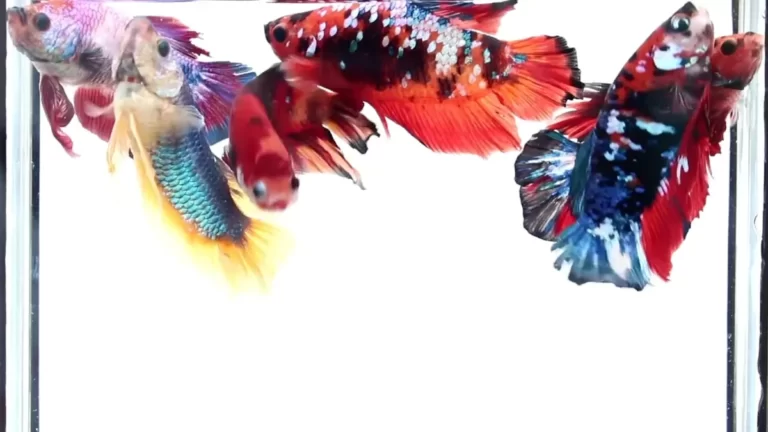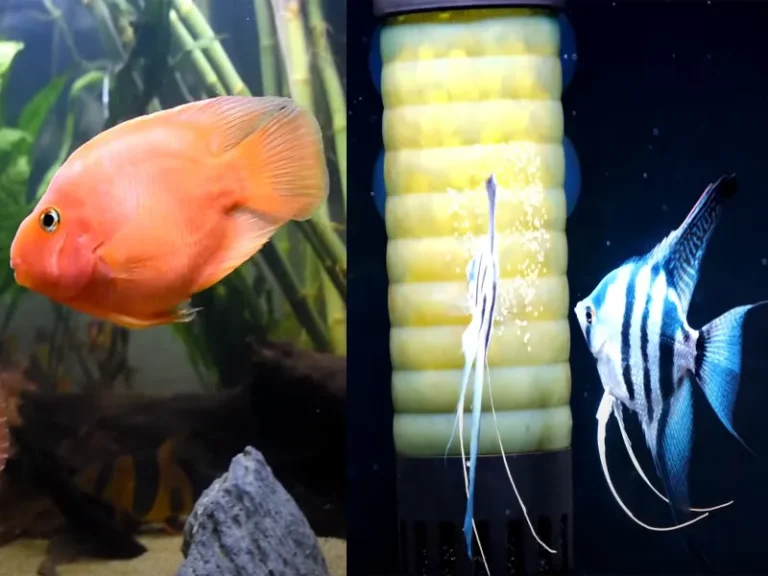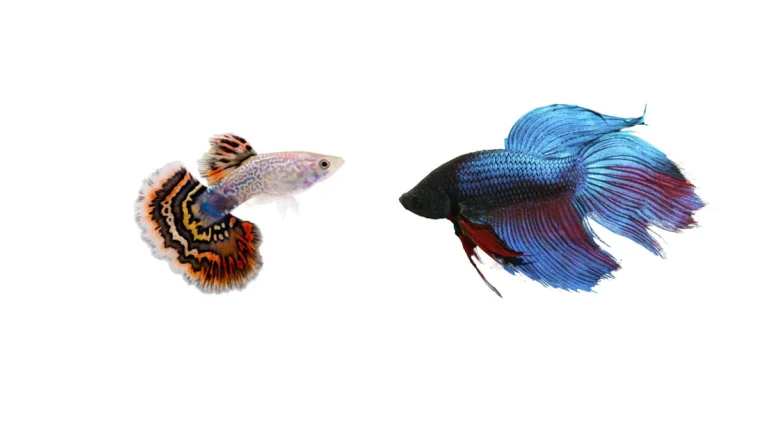Unveiling the World of Red Devil Betta: Care, Behavior, and More
Whether you’re a betta enthusiast or a curious beginner, this guide is your gateway to understanding and providing optimal care for Red Devil Betta. From their vibrant colors and unique personalities to their specific tank needs and compatibility with other fish, we will equip you with essential knowledge to create a thriving environment for these aquatic wonders.
Get ready to embark on an exciting journey through the captivating world of Red Devil Betta, uncovering the secrets that make them truly enchanting. Let’s dive in!

About Red Devil Betta
Explore the captivating world of Red Devil Betta, a remarkable freshwater fish species originating from Southeast Asia. With their vibrant colors, flowing fins, and larger size compared to other bettas, they are truly extraordinary.
Discover the unique characteristics that set them apart, from their mesmerizing hues to their elegant patterns. Uncover the origins of these captivating creatures and the diverse range of options available through selective breeding.
As we delve deeper into their care requirements, behavior, and compatibility with tank mates, you’ll gain a comprehensive understanding of Red Devil Betta. Get ready to be mesmerized by their beauty and uncover the secrets of these captivating fish. Welcome to the fascinating world of Red Devil Betta!
Lifespan of Red Devil Betta
the lifespan of Red Devil Betta is essential for providing them with proper care and ensuring their well-being. On average, these captivating fish can live for about 3 to 5 years, although some individuals have been known to exceed this range and live up to 7 years or more.
Several factors can influence their longevity, including genetics, environment, and stress levels. Inheriting strong genes, maintaining a suitable tank environment, and minimizing stressors can contribute to a longer lifespan.
By providing clean water, appropriate tank size, and a balanced diet, you can help maximize their well-being and increase their chances of living a long and fulfilling life.
Appearance of Red Devil Betta
Red Devil Betta is truly mesmerizing, making them stand out among other betta fish. They exhibit a wide range of vibrant colors and patterns, with males being particularly striking.
From fiery reds and deep blues to captivating yellows, their hues are a feast for the eyes. Males also showcase long, flowing fins and intricate patterns, adding to their elegance. Females, although more subtly colored, possess their own unique charm.
Size of Red Devil Betta
Red Devil Bettas start as tiny fry, measuring only a few millimeters in length. As they grow, they progress through various stages, including the juvenile and adult stages.
On average, males reach a size of 3 to 4 inches (7.6 to 10.2 cm), while females are slightly smaller. It’s important to note that individual growth rates may vary.
Red Devil Betta Care
Proper care is crucial for the well-being of Red Devil Betta. Here are some key aspects to consider:
Tank Requirements
Providing an optimal tank environment is essential. Red Devil Bettas require spacious tanks with a minimum capacity of 20 gallons. Ensure the tank is properly set up with suitable decorations, such as live or silk plants, caves, and hiding spots.
Water and Lighting Conditions
Maintain the water temperature between 78 to 82°F (25 to 28°C) and the pH level around 6.5 to 7.5. Red Devil Bettas thrive in well-lit tanks, so provide appropriate lighting for their comfort.
Food & Diet
Offer a balanced diet consisting of high-quality betta pellets, supplemented with occasional treats like bloodworms or brine shrimp. Feed them small portions twice a day and avoid overfeeding.
Water Parameters:
Ensure high water quality by monitoring ammonia, nitrate, and nitrite levels. Regular water changes and proper filtration are vital to maintain a healthy environment. Red Devil Bettas prefer slightly hard water, so adjust water hardness accordingly.
Common Possible Diseases:
Red Devil Bettas can be susceptible to diseases like Ich, fin rot, and dropsy. Learn to identify the symptoms, practice prevention measures such as quarantine for new fish, and be prepared with appropriate treatments if needed.
By providing a suitable tank environment, maintaining optimal water conditions, offering a nutritious diet, and being vigilant about common diseases, you can ensure the well-being and longevity of your Red Devil Betta companions.
Behavior & Temperament of Red Devil Betta
Red Devil Bettas have captivating behavioral traits that make them a joy to observe. They are highly energetic and known for their active swimming patterns. Being territorial creatures, especially the males, they can display aggression.
To mitigate this, it’s crucial to provide ample space and appropriate tank decorations for them to establish territories and find hiding spots. Red Devil Bettas have an assertive nature and may flare their fins and gill covers when feeling threatened or establishing dominance.
However, they generally exhibit friendly and curious behavior towards humans. When approaching their tank, it’s important to be cautious, avoiding sudden movements or loud noises that could startle them. This will help create a calm and enjoyable environment for both you and your Red Devil Betta.
Breeding Red Devil Betta
Breeding Red Devil Bettas can be a rewarding experience, but it requires careful planning and preparation. Here’s an overview of the breeding process:
- Condition the Breeders: Separate a male and a female in separate tanks and feed them a high-quality diet to condition them for breeding. Maintain optimal water conditions and gradually increase the temperature to stimulate breeding behavior.
- Introduce the Pair: Once the breeders are conditioned, introduce the male into the female’s tank. Monitor their behavior closely, as the male may display courtship rituals such as building bubble nests.
- Spawning: The male initiates the spawning process by wrapping his body around the female, releasing sperm, and fertilizing the eggs as the female releases them. The female collects the eggs in her mouth or on plants.
- Separation: After spawning, it’s crucial to remove the female to prevent aggression from the male. Provide ample hiding spots for the female to release the fry and ensure proper care.
- Rearing the Fry: The male assumes the responsibility of guarding the nest and caring for the eggs and hatched fry. Provide suitable food for the fry, such as infusoria or commercially available fry food, as they grow.
Related Post: Is Duckweed Good for Bettas? Unlocking the Secrets to a Healthy Diet
Are Red Bettas More Aggressive?
Red Devil Bettas are known for their heightened aggression compared to other betta fish variants. Their territorial nature and assertive behavior can make them more prone to aggressive encounters. However, it’s important to note that aggression levels can vary among individual fish, and proper care, suitable tank conditions, and compatible tank mates can help manage their aggression.
When comparing Red Devil Bettas to other betta fish variants, their aggression is often more pronounced. It’s crucial to provide them with ample space, suitable hiding spots, and carefully selected tank mates to maintain a harmonious aquarium environment. Observing their behavior and making adjustments as necessary will help ensure the well-being of your Red Devil Betta and its tank companions.
Related Posts:




